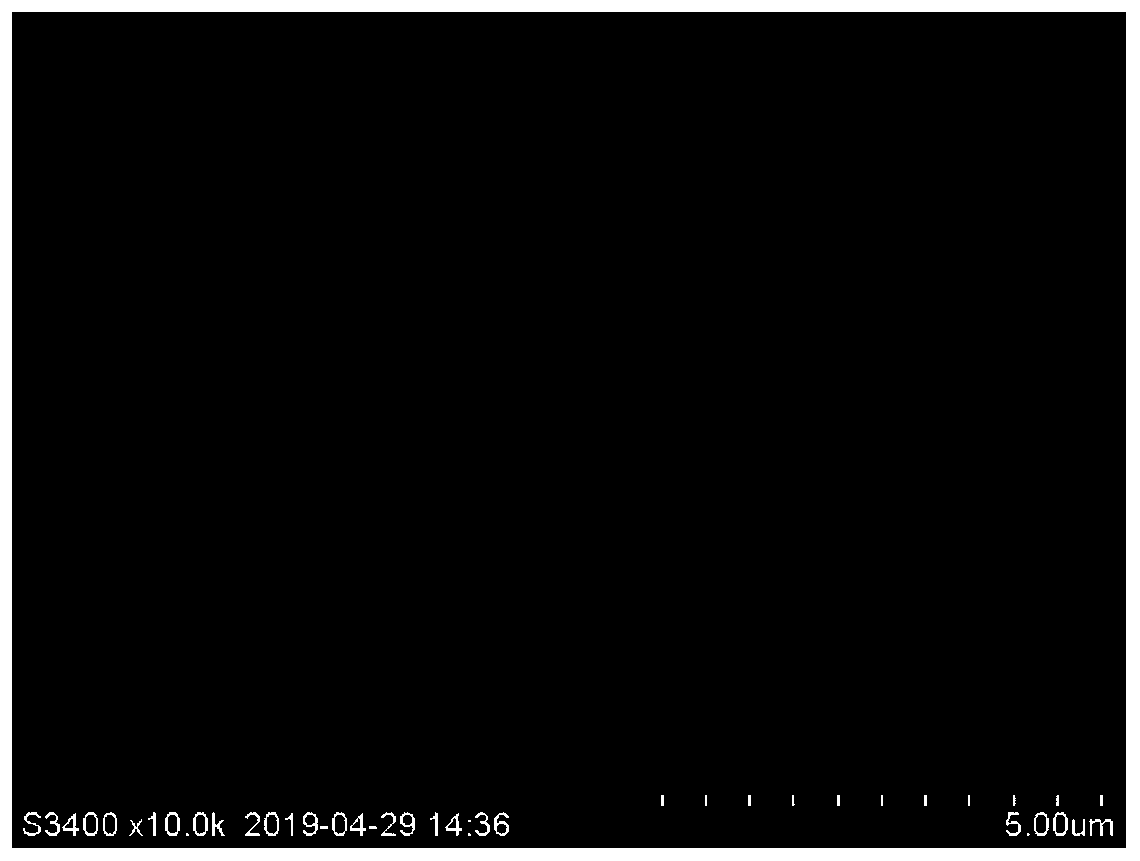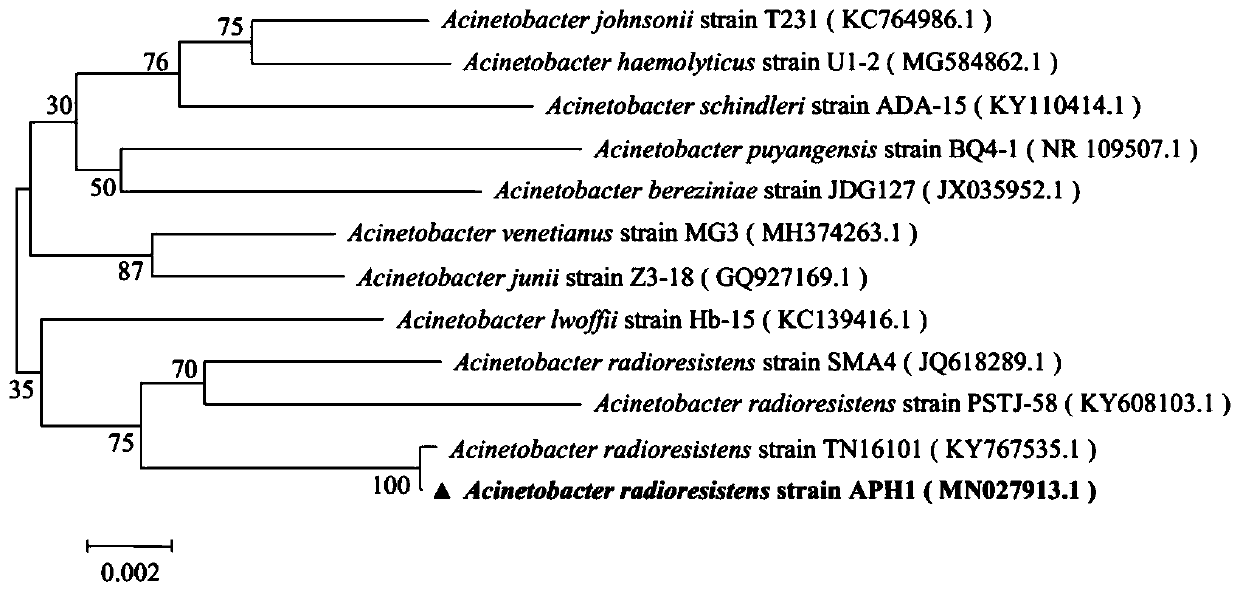Screening method and application of phenol degradation strain
A technology of phenol degradation and screening methods, applied in the field of microorganisms, can solve the problems of high requirements for adsorption materials, narrow application range, large energy consumption, etc., achieve low cost, no secondary pollution, and solve pollution problems
- Summary
- Abstract
- Description
- Claims
- Application Information
AI Technical Summary
Problems solved by technology
Method used
Image
Examples
Embodiment 1
[0039] Example 1 Isolation and Identification of Radiation-resistant Acinetobacter APH1
[0040] (1) Take samples
[0041] Soil sample source: Jinneng Science and Technology Factory of Shandong Province.
[0042] (2) Screening and isolation of strains
[0043] The collected soil and mud samples were evenly mixed, 5 grams of the mixture was added to a 250 mL Erlenmeyer flask filled with 50 mL of MSM medium, and phenol was added to make the final concentration 500 mg / L as the sole carbon source. Place the Erlenmeyer flask at 30° C. and culture it on a shaker at 200 rpm for 5 days. Transfer to 50mL fresh MSM medium according to 5% inoculum size, add phenol to make the final concentration 500mg / L, transfer every 5 days, repeat three times, dilute and spread the last culture solution before adding 500mg / L On the solid medium of inorganic salts of phenol, cultivate at 30°C until a single colony grows. Pick a single colony into a fresh inorganic salt liquid medium, select the fas...
Embodiment 2
[0047] Example 2 Growth of Acinetobacter radioresistant APH1 under different culture conditions and optimization of its ability to degrade phenol
[0048] 1. The optimum temperature for the growth and degradation of the strain: inoculate the strain into 50 mL of MSM medium containing 500 mg / L phenol concentration at pH = 7.0, and place the strain at 20°C, 25°C, 30°C, 37°C, and 42°C respectively. Cultivate on a shaking table with a rotation speed of 200 rpm, measure the OD with a spectrophotometer at regular intervals 600 To detect the cell density, the phenol concentration was detected by high performance liquid chromatography (HPLC). Such as image 3 As shown in a and 3b, the most suitable culture temperature for strain growth and phenol degradation is 30 °C.
[0049] 2. Optimal pH for strain growth and degradation: Inoculate the strain into 50 mL of MSM medium containing 500 mg / L phenol concentration, adjust the pH to 5.0, 6.0, 7.0, and 8.0 with hydrochloric acid and NaOH,...
Embodiment 3
[0051] Example 3 Verification of the maximum tolerance to phenol of Acinetobacter radiation-resistant APH1
[0052] The strain was inoculated into 50 mL of MSM medium with different phenol concentrations of 500, 700, 800, 950, 1150, and 1300 mg / L at an optimum pH of 6.0, and cultured on a shaker at an optimum temperature of 30°C and a speed of 200 rpm. Measure OD with a spectrophotometer at regular intervals 600 To detect the cell density, the phenol concentration was detected by high performance liquid chromatography (HPLC). Such as Image 6 As shown in a and 6b, as the concentration increases, the growth and degradation of the strain become worse. When the phenol concentration is above 1150 mg / L, the cells hardly grow and degrade. This may be because the higher the phenol concentration, the greater the toxicity to the cells. The strain APH1 Can tolerate 950mg / L of phenol.
PUM
 Login to View More
Login to View More Abstract
Description
Claims
Application Information
 Login to View More
Login to View More - R&D
- Intellectual Property
- Life Sciences
- Materials
- Tech Scout
- Unparalleled Data Quality
- Higher Quality Content
- 60% Fewer Hallucinations
Browse by: Latest US Patents, China's latest patents, Technical Efficacy Thesaurus, Application Domain, Technology Topic, Popular Technical Reports.
© 2025 PatSnap. All rights reserved.Legal|Privacy policy|Modern Slavery Act Transparency Statement|Sitemap|About US| Contact US: help@patsnap.com



